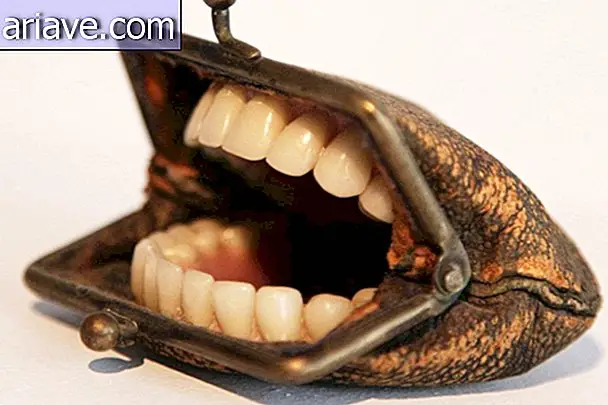Scientists rebuild DNA sequence of world's oldest hominid
Scientists at the Max Planck Institute for Evolutionary Anthropology in Leipzig, Germany, have accomplished the incredible feat of sequencing the mitochondrial DNA of the earliest known human ancestor. This type of DNA is especially important in the study of human evolution because, unlike nuclear DNA - which brings a mixture of father and mother genetic material - it comes only from the mother, and hardly changes over time. generations.
For this study we used the material obtained from 1.95 grams of fragments extracted from a fossilized femur of approximately 400 thousand years. The oldest DNA studied so far was only 100, 000 years old.

The femur used for the analysis belongs to one of 28 skeletons found in a cave known as Sima de los Huesos, located in Atapuerca, Spain. The site was discovered a few decades ago and carefully excavated by Spanish paleontologists. However, although bones have been cataloged and preserved all this time, it has only now been possible to perform DNA testing due to the lack of the necessary technology.
Frozen weather

The most remarkable thing about fossils is that they are in an incredible state of conservation, thanks to the constant humidity and low temperature conditions of the Sima de los Huesos . Usually, remains of such well-preserved genetic material are found in super-frozen places, such as Siberia's permafrost, for example, which makes the cave in Spain a unique place.
The skeletons were in a 13-meter-deep vertical pit 30 meters from the surface and 500 meters from the nearest cave entrance. Within this environment, the temperature remained at 10.6 ° C for over half a million years, and relative humidity was also constantly near saturation. Another interesting fact is that paleontologists believe that there are many other skeletons there.
Genetic Challenge

Although sequencing has been done and the fossils are well preserved, that does not mean that the whole process was not an incredible challenge. The people from Leipzig explained that the material - almost half a million years old! - was very damaged, so it was necessary to develop new techniques so that they could reconstruct the mitochondrial DNA of the hominid. Two years ago, such a feat would not have been possible.

The next step involved comparing this DNA with that of Neanderthals, Denisovans, current humans, and apes. The result, however, surprised the researchers, as it was not possible to classify the origin of the Sima de los Huesos hominid within any of the species known to date. Anatomically, the hominid looks more like Neanderthals, while DNA resembles that of Denisovans.
With the result of the analysis, researchers now face a big question, and it seems that they will have to rewrite the evolutionary history of humans. After all, how can the Denisovan DNA - an enigmatic lineage whose oldest genetic material obtained so far is 80, 000 years old and found in Siberia, more than 6, 000 kilometers from Spain - can be present in an individual? so similar to Neanderthals?
Evolution map
Based on previous findings, scientists have agreed that the three lineages - humans, Neanderthals, and Denisovans - shared a common ancestor, although it is unclear how these species fit the evolutionary map. And, further complicating matters, it is possible that the three lineages have related. But get ready for the soap opera!

Briefly, the common ancestor of humans, Neanderthals, and Denisovans lived in Africa 1 million years ago. This being gave rise to humans and “separated” from this lineage, and later left Africa, separating again to give rise to the Neanderthals and Denisovans approximately 300, 000 years ago.
Evidence points out that Neanderthals headed west of Europe, while Denisovans headed farther east beyond the Ural Mountains. Human ancestors remained in Africa, where they originated Homo sapiens 200, 000 years ago, and about 60, 000 years ago, they traveled to Europe and Asia. There they mingled with the Neanderthals and Denisovans who later, for some reason, became extinct.
The discovery revealed by DNA analysis means that all this evolutionary mess you just read above will have to be rethought.
Possible hypotheses

The researchers have put forward some hypotheses to explain the finding, although the most widely accepted is that the Sima hominid may be a Neanderthal father and Denisovan mother hybrid. Another possibility is that this being belonged to a lineage that separated from the Denisovans shortly after they derived from the common ancestor they shared with Neanderthals and modern humans.
Of course, to assemble this complicated puzzle will require much more study and analysis, and scientists hope to get more genetic material from the fossils to pursue the research. Perhaps most remarkable of all, however, is the fact that scientists have proven that genetic material can survive for at least 400, 000 years, which means many more specimens can be analyzed.











